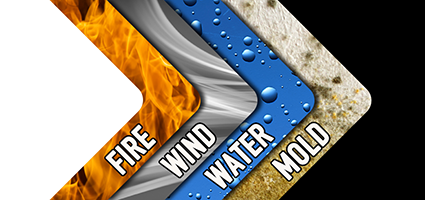
Odor Removal SERVICE
Odors stemming from fire and smoke damage, water damage and mold removal and damage, sewage and biological sources are invisible threatss that can disrupt your life and your health. In particular, smoke and odor particles continue to be airborne many days after a fire has stopped. Whatever the root of the problem, we have the professional products, systems and specialty equipment to remove a wide range of odors so you can breathe easy again. AAA Restoration & Comstruction Services is a Odor Removal Service company that is certified to take care of this problem quickly.
24/7/365 505-460-2227
odor Overview
Smoke Odor Removal
Smoke odor is a pervasive and stubborn odor that lingers long after the flames have been put out. Whether caused by a natural disaster or an accident, such as a fireplace left unattended or a cooking fire that has gotten out of control, smoke odor presents a challenge to even experienced restoration professionals.
WHAT CAUSES ODORS?
Odors that are a product of a fire, flooding or mold infestation have unique causes, characteristics and necessary approaches required to eliminate them. AAA Restoration & Construction Services is an Odor Removal Service Company and we will find the cause of the odor, as that will drive the steps necessary for its removal. Successful, professional odor removal in homes and businesses starts with the proper procedures.

CAUSES OF ODORS
ODORS FROM WATER
The AAA Restoration professionals are be aware of three primary causes of these odors: sewage, bacteria and mold and mildew growth. A common culprit of home flooding, burst pipes lead to a distinct smell that often tips homeowners off to the issue itself. When pipes burst, they can no longer transport wastewater and sewage to municipal sewage lines. The resulting backup of sewage and waste rapidly distributes its characteristic odor throughout the home. An external cause of odor, free-flowing floodwater known as Blackwater is commonly filled with harmful bacteria. Any floodwater that comes into contact with porous furniture -like carpets or mattresses -poses a health risk, as the bacteria-filled water will quickly seep into the material.
If the furniture is not discarded or cleaned thoroughly, the bacteria will emit a strong, unpleasant odor throughout the home. When homes are not effectively dried, and cleaned, following flooding, an even greater issue can occur mold and mildew growth. The growth of mold and mildew can lead to structural damage, health issues and the development of a full-blown mold infestation.
ODORS FROM MOLD
Regardless of whether mold infestations occur from water damage or another cause, the odor resulting from the infestation will not go unnoticed. Mold can present as several different types, some of which are more dangerous than others. Although the resulting odor will depend on the type, the odor from the mold is most commonly described as dank, earthy, stale or damp. It’s important to reiterate a common theme of odors in homes: The longer it takes to address the mold infestation issue, the more prominent the odor will become. By neglecting to pursue eradication, homeowners will suffer the lasting, noticeable effects of odor permeation.
ODORS FROM FIRE
A strong odor in the aftermath of a fire may be due to a few different causes: from soot, to smoke damage from wood and entrapped smells that linger in walls, furniture and clothing. Soot is the easiest cause to identify, as it’s visible to the human eye. When soot lands on surfaces or clothing, it creates a challenging situation for effective removal. Characterized by its black, powdery or flaky appearance, soot can either be dry or oily, depending on the level of oxygen present during its formation. Its form affects the methods that should be used to remove the soot, as both oily and dry soot require unique tools and approaches to promote safe, successful removal.

